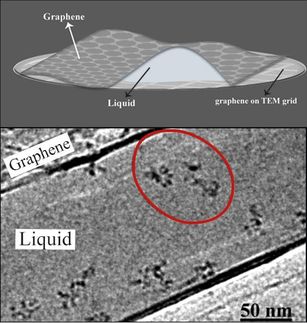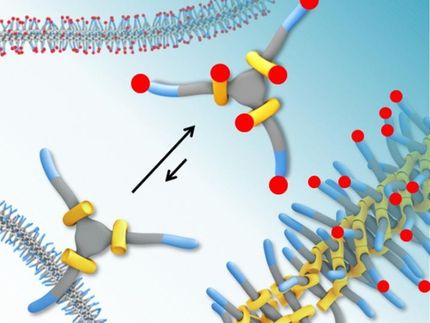Gaming technology unravels 1 of the most complex entities in nature
Computational research unveils secrets in the human carbohydrate bar-code
BBSRC-funded researchers at the University of Manchester's Institute of Biotechnology have used the power of off-the-shelf computer gaming technology to capture previously unobservable atomic movements. The research is helping to chart one of nature's most complex entities known as "glycomes" - the entire complement of carbohydrates within a cell.
This novel solution provides a new understanding of these vital biomolecules which play a role in everything from neuronal development, inflammation and cell structure, to disease pathology and blood clotting.
Understanding the shapes of major biological molecules has revolutionised areas like drug development and medical diagnostics, but the shape of complex carbohydrates has been largely ignored.
The research, reported in a series of six peer-reviewed scientific publications with the most recent appearing in Carbohydrate Research, provides a new view of these biochemical barcodes and present new opportunities in the science of carbohydrates, such as designing drugs or biomaterials that mimic carbohydrate shape and interpreting burgeoning functional glycomics data.
Dr Ben Sattelle from the Faculty of Life Sciences said: "Carbohydrate activity stems from 3D-shape, but the link between carbohydrate sequence and function remains unclear. Sequence-function relationships are rapidly being deciphered and it is now essential to be able to interpret these data in terms of molecular 3D-structure, as has been the case for proteins and the DNA double-helix.
"By using technology designed for computer games, we have been able to investigate the previously unseen movements of carbohydrates at an atomic scale and over longer timescales than before. The insights relate carbohydrate sequence to molecular shape and provide information that will be vital for many industries.
"Carbohydrates remain extremely difficult to characterise in 3D using experiments and advances in computer technology, which exploit computer-gaming technology, have enabled us to use and develop methods that can routinely provide accurate 3D-data for this important class of biomolecules. The ability to model atomic motions in large carbohydrate polymers promises to transform our understanding of fundamentally important biological processes. For example, our approach has potential applications in the design of carbohydrate-based biomaterials, pharmaceuticals and foods."
Modelling carbohydrate motions in water is computationally demanding, meaning that simulations have been limited to short nanosecond timescales using conventional software and central processing unit (CPU) based computers. The team from Manchester achieved simulations ranging from one microsecond (the time it takes for a strobe light to flash) to twenty-five microseconds by exploiting the extra computational power of graphics processing units (GPUs) that are commonly used in game-play to produce moving images. Compared to CPU-based computers, or even supercomputing clusters of them, GPU technology allows many more simultaneous calculations to be performed.
The researchers produced the first predictions of microsecond molecular motions in glycomic building blocks and oligosaccharides. Previously unobservable atomic movements were predicted and found to be sensitive to the carbohydrate sequence. Building on these new insights, the researchers developed a new physics-based model and GPU software that allows far more realistic simulations of long carbohydrate sequences (polymers) - on microsecond and micrometer scales. Using heparan sulphate chains (Figure 1, see notes) the researchers showed that including both flexible degrees of freedom in their model, polymer linkage and ring motions, is crucial to reproduce experimental shape data and ring dynamics were implicated in sequence-dependent biological activity.
The research has culminated in a computational GPU-based method and protocol that can now be used by other researchers to explore the 3D-landscape of largely unchartered organismal glycomes in unprecedented detail.
Most read news
Organizations
Other news from the department science
These products might interest you

CHSN-O, CN and N Elemental Analyzers by Velp Scientifica
State-of-the-art Elemental Analyzers for N, CN and CHSN-O in organic samples
Consistency, ease of use, and premium features for elemental analysis following official standards

HYPERION II by Bruker
FT-IR and IR laser imaging (QCL) microscope for research and development
Analyze macroscopic samples with microscopic resolution (5 µm) in seconds

Get the analytics and lab tech industry in your inbox
By submitting this form you agree that LUMITOS AG will send you the newsletter(s) selected above by email. Your data will not be passed on to third parties. Your data will be stored and processed in accordance with our data protection regulations. LUMITOS may contact you by email for the purpose of advertising or market and opinion surveys. You can revoke your consent at any time without giving reasons to LUMITOS AG, Ernst-Augustin-Str. 2, 12489 Berlin, Germany or by e-mail at revoke@lumitos.com with effect for the future. In addition, each email contains a link to unsubscribe from the corresponding newsletter.


























































